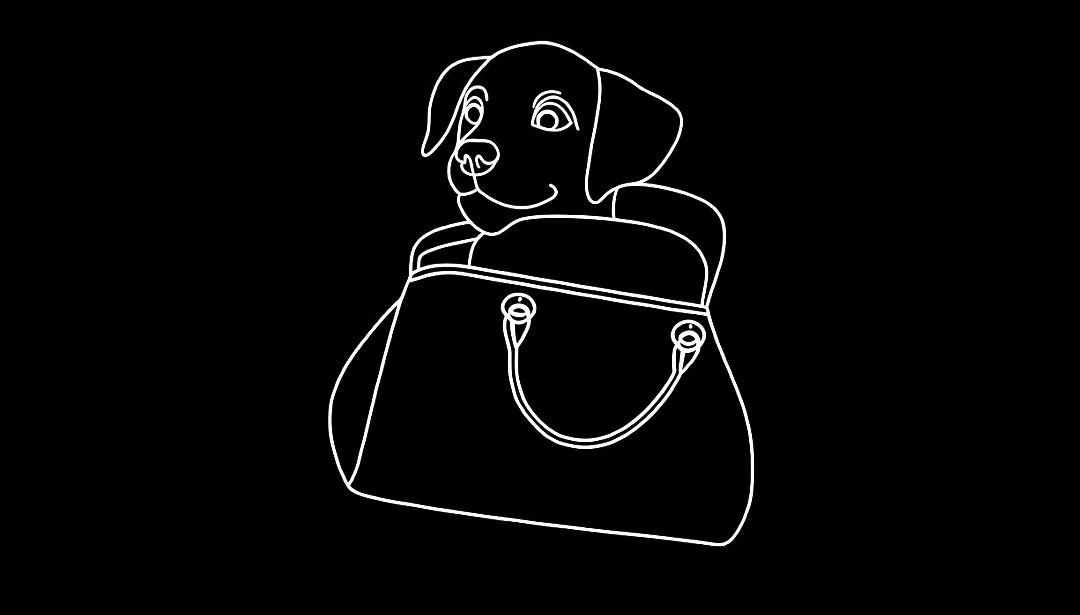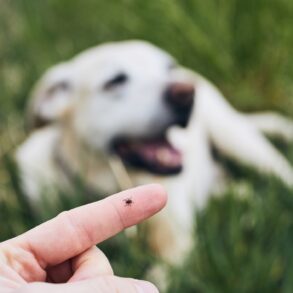
(Photo by Ching Louis Liu on Shutterstock)
In a nutshell
- With over 1 billion pet dogs worldwide (compared to just 220 million pet cats), our canine companions have become the most common large carnivore on the planet, with environmental impacts that many owners overlook.
- Dogs disturb wildlife even when leashed – studies show birds flush from nests up to 100% of the time when dogs pass by, and many animals avoid areas with dog scent for up to 100 meters around walking trails.
- The pet dog industry has an enormous ecological footprint – from the toxic chemicals in flea medications washing into waterways to dog food production creating greenhouse gas emissions equivalent to an entire country.
PERTH, Australia — Your pooch might be adorable, loyal, and your best buddy – but scientists now argue she or he may also be an ecological menace. According to researchers, dogs are quietly wreaking environmental havoc at a scale few pet owners ever consider.
A study from Australia’s Curtin University paints a troubling picture of how pet dogs – yes, our sweet and beloved tail-wagging companions that greet us at the door – create far-reaching environmental damage that often flies under the radar of conservation discussions.
“The environmental impact of owned dogs is far greater, more insidious, and more concerning than is generally recognized,” write researchers Bill Bateman and Lauren Gilson in their eye-opening review sent to StudyFinds and published in Pacific Conservation Biology.
While feral cats routinely face public scorn for wildlife predation, your leashed (or often unleashed) Labrador deserves similar scrutiny, according to the research. With over a billion owned dogs worldwide – making domestic dogs the most common large carnivore on the planet – their combined effects range from direct wildlife killing to chemical pollution from flea medications.
The researchers don’t present new experimental data, but instead pull together existing research on several fronts: wildlife attacks, behavior disturbances, soil chemistry changes, and even the massive carbon footprint of dog food production. Their findings suggest many dog owners remain oblivious to their pets’ wider ecological effects.
Dogs began as wolves about 16,000 years ago but have since been artificially spread across environments worldwide. Despite domestication, they’ve kept their predatory instincts – with sometimes devastating consequences.

A single escaped pet dog (identified by its collar) killed an estimated 500 Brown Kiwis (flightless birds native to New Zealand) out of a population of 900 in just five weeks. In the Australian island state of Tasmania, researchers documented 887 penguin deaths from dog attacks between 1980 and 2020, enough to cause entire colony collapses.
“Direct predatory behavior can occur even close to home,” the researchers note, citing wildlife rehabilitation data showing dog attacks account for 9.2% of admissions, with these victims suffering the highest mortality rates (72.7%).
Beyond actual attacks, a dog’s mere presence disrupts wildlife. Shore-nesting birds flush from their nests up to 100% of the time when dogs pass by, versus much lower rates from humans alone. This forced movement isn’t just inconvenient – it’s potentially fatal.
When birds must repeatedly flee, they burn critical energy reserves. Researchers found that just 10 alarm flights daily triggered by dogs could increase energy expenditure by 4.5-4.7% for certain shorebirds and 7.5-7.8% for sand plovers in northern Australia. For migratory birds already depleted from long journeys, this extra drain can mean death.
Think keeping your dog leashed solves these problems? Think again. Studies show that even leashed dogs substantially reduced bird abundance and diversity in woodland areas compared to human-only visitors. Deer and mammals demonstrated stronger avoidance when humans had dogs versus when humans were alone or when wild predators like coyotes were present.
Your dog’s impact continues long after walks end. The scent marks, feces, and urine they leave behind affect wildlife behavior for extended periods. Studies found mule deer and small mammals stayed away from areas within 50-100 meters of dog-walked trails. Even predators like foxes and bobcats avoided places with heavy dog traffic.
“Dogs don’t even have to be present to be bad for wildlife. They scent-mark trees and posts with their urine and leave their faeces in many places. These act as warnings to many other species,” Bateman writes in a post published on The Conversation.
Those forgotten poop bags add up fast. “An average dog produces around 0.2 kg faeces and 0.4 l urine per day; over a life of 13 years this totals over 1000 kg of faeces and 2000 l of urine per dog,” the researchers found. This waste carries parasites and pathogens that infect wildlife and humans alike.
In urban areas, dog urine becomes a major contributor of nitrogen to waterways. Dog feces often contain intestinal parasites, roundworms, and various disease-causing agents. Researchers testing waste at tourist sites in Sardinia found multiple parasite species, including the intestinal nematode Strongyloides stercoralis and Toxocara roundworms.
Dogs’ monthly flea treatment carries its own risks. When dogs enter streams or lakes, these chemicals wash off and kill aquatic invertebrates. One study found up to 86% of Fipronil, a common flea and tick medication, rinses off in water and remains toxic at extremely low concentrations.
“The medications we use to rid our pet dogs of fleas or ticks can last weeks on fur, and wash off when they plunge into a creek or river. But some of these medications have ingredients highly toxic to aquatic invertebrates, meaning a quick dip can be devastating,” Bateman writes in The Conversation.

Perhaps most shocking is the environmental toll of what goes into your dog’s bowl. Pet food production creates greenhouse gas emissions equivalent to the 60th highest-emitting country globally. The industry uses land nearly twice the size of the United Kingdom and consumes up to 13.5% of annual wild fish catches.
Social media provides numerous examples of dog owners ignoring rules protecting sensitive wildlife areas. Studies in Australia and the United States found only 12-25% of dog owners followed leash laws at vulnerable wildlife sites – even when these same owners expressed support for such regulations when surveyed.
The researchers note finding solutions won’t be simple. Expecting people to give up their dogs isn’t realistic. However, they identify two key areas needing improvement: reducing the total number of dogs worldwide and changing owner behavior.
Behavior change faces steep challenges. Despite generally favorable environmental attitudes among dog owners, many resist taking responsibility for their pets’ impacts. One researcher reported being threatened when asking people to keep dogs off a protected beach.
The researchers call for “a dialogue on how we can maintain our important relationship with companion animals and balance that with a meaningful, sustainable stewardship of the environments.” This might include better enforcement of existing rules, improved education about impacts, and developing more sustainable pet ownership practices.
For dog lovers, this research isn’t an attack but a wake-up call. Understanding our pets’ full environmental impact is essential if we want to ensure our dogs don’t quietly become one of wildlife’s biggest threats.
“People love their dogs. They’re always happy to see us. Their companionship makes us healthier, body and mind. Many farms couldn’t run without working dogs. We don’t want to acknowledge they can also cause harm,” Bateman writes.
But he adds: “Dogs, of course, are not bad. They’re animals, with natural instincts as well as the domesticated instinct to please us. But their sheer numbers mean they do real damage. … Being a good dog owner means caring not just for the animal we love, but the rest of the natural world.”
Paper Summary
Methodology
The researchers conducted a comprehensive literature review rather than collecting new experimental data. They synthesized existing research on the environmental impacts of owned dogs across multiple dimensions. This involved examining published studies that documented wildlife disturbance patterns, direct predation events, the effects of dog waste on soil and water chemistry, disease transmission to wildlife, and the environmental footprint of pet food production. They paid particular attention to studies that compared the impact of dogs versus humans alone in natural environments, as well as those that measured wildlife behavioral responses to dog presence. The review also incorporated social media evidence showing examples of dog impacts and owner non-compliance with regulations in sensitive ecological areas.
Key Findings
The researchers found that owned dogs impact the environment in multiple ways beyond direct predation. Shore-nesting birds were particularly vulnerable, with studies showing birds flushing from nests nearly 100% of the time when dogs passed by, compared to much lower rates from humans alone. Even leashed dogs significantly reduced bird abundance and diversity in woodland sites. The researchers documented that the mere scent of dogs caused wildlife avoidance behaviors, with deer and small mammals showing reduced activity within 50-100 meters of dog-walked trails. The review also revealed alarming statistics about dog waste, with a single dog producing over 1,000 kg of feces and 2,000 liters of urine during its lifetime, introducing parasites and altering soil chemistry. Perhaps most surprisingly, the dog food industry’s environmental footprint is comparable to the emissions of some entire countries, using land nearly twice the size of the United Kingdom.
Limitations
The paper primarily synthesizes existing research rather than presenting new data, which means it inherits any limitations from the original studies. The researchers acknowledge that they focus primarily on negative environmental impacts, though they briefly mention the positive roles dogs play in human companionship and as conservation detection dogs. The study also doesn’t quantify the relative impact of owned dogs compared to other environmental pressures. Additionally, most of the studies cited were conducted in Australia, the United States, and Europe, potentially limiting the global applicability of some findings. The paper notes that compliance studies on dog regulations are often limited in scope and duration, which may affect their reliability.
Funding and Disclosures
The paper doesn’t explicitly mention any funding sources or conflicts of interest. This suggests the work was likely conducted as part of the researchers’ academic responsibilities at Curtin University in Australia without dedicated external funding. No commercial relationships or conflicts related to the pet industry are disclosed by the authors, which is noteworthy given the paper’s critical stance on aspects of dog ownership and the pet food industry.
Publication Information
The paper titled “Bad Dog? The environmental effects of owned dogs” was authored by Philip W. Bateman and Lauren N. Gilson from the Behaviour and Ecology Research Group, School of Molecular and Life Sciences at Curtin University in Western Australia. The paper, published in Pacific Conservation Biology on Aprl 10, 2025, is structured as a review article synthesizing existing research rather than presenting original experimental findings.
This post was originally published on this site be sure to check out more of their content.







































